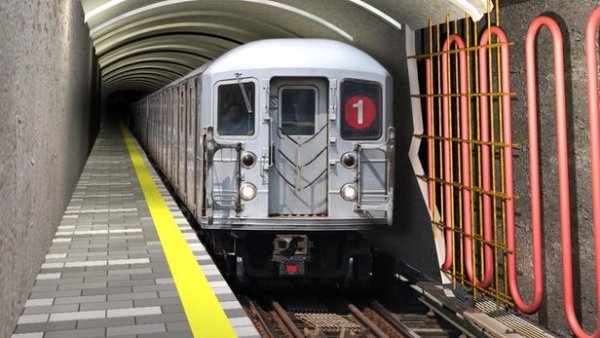Turning subway tunnels into geothermal recovery systems can provide heating for thousands of homes
According to foreign media reports, the current thermal environment in subway tunnels is becoming increasingly prominent. In theory, if the heat in the tunnel can be "captured" and fully utilized, then all the heat can be treated as an untapped energy source. Now, EPFL researchers have studied the heat in subway tunnels and outlined a geothermal heat recovery system that may provide heating and cooling for thousands of nearby households.

The air in subway tunnels and stations draws heat from many different sources, such as the heat emitted by trains, heat from electronic equipment such as lights and signal lights. These places require usually complex ventilation and temperature control systems to remove excess heat. Accurately calculating the heat in the air of train tunnels has been a difficult task, but now researchers at the EPFL Soil Mechanics Laboratory (LMS) claim to have completed this task. The team developed a model that allowed them to accurately calculate the convective heat transfer coefficient for a given tunnel environment.
This important formula can be applied to develop systems that use extra energy and pump it back to the ground, where it can provide heating and cooling for nearby apartments.
The concept of this technology is a bit like a giant refrigerator. Plastic pipes are built into the walls of the tunnel and are filled with heat transfer fluid. The cold liquid is pumped through the pipe, where it is heated by the air in the tunnel and appears on the surface as a hot liquid. In summer, the system can act as an air conditioner.
The team stated that the system is relatively cheap and energy-efficient to install, and has an expected service life of up to a century. The heat pump is the most vulnerable part of this puzzle and needs to be replaced every 25 years or so. Researchers have now applied the model to the subway line currently being developed in Lausanne, Switzerland, and calculated the city ’s potential benefits.
"Our research shows that installing the heat recovery system in 50% to 60% of the planned route-or 60,000 square meters (645,000 square feet) of tunnel surface area-will meet the heating of 1,500 standard 80 square meter (860 square feet) apartments Demand, or to meet the needs of up to 4,000 Minergie certified mini-energy houses, "said Margaux Peltier, principal investigator of the study. "The conversion from gas heating will reduce the city's carbon dioxide emissions by 2 million tons per year."
This is not the only attempt to obtain waste energy from the subway. A few years ago, Transport for London commissioned a regenerative braking system for trains in the London Underground, which delivered energy back to the grid.
The research was published in the journal Applied Thermal Engineering.
ASSA ABLOY Style Industrial High Performance Doors
KENVO supplys premium quality automatic high speed rolling doors with similar design and function as Assa Abloy doors. But our price is much lower and also future maintenance parts price is easier to get.
So we both save your one-time purchase cost of high speed door, and also reduce your long term future cost with low maintenance and cheap replacement parts.
assa abloy high speed door, assa abloy industrial door, assa abloy rapid door
SHANGHAI KENVO DOOR CO.,LTD , https://www.kenvodoor.com